
The House of Gonzaga is an Italian princely family that ruled Mantua in Lombardy, northern Italy from 1328 to 1708. They also ruled Monferrato in Piedmont and Nevers in France, as well as many other lesser fiefs throughout Europe. The family includes a saint, twelve cardinals and fourteen bishops. Two Gonzaga descendants became empresses of the Holy Roman Empire, and one became Queen of Poland and Grand Duchess of Lithuania in the Polish–Lithuanian Commonwealth.

The Duchy of Parma and Piacenza was an Italian state created in 1545 and located in northern Italy, in the current region of Emilia-Romagna.

Guastalla is a town and comune in the province of Reggio Emilia in Emilia-Romagna, Italy.

The Duchy of Mantua was a duchy in Lombardy, northern Italy. Its first duke was Federico II Gonzaga, member of the House of Gonzaga that ruled Mantua since 1328. The following year, the duchy also acquired the March of Montferrat, thanks to the marriage between Gonzaga and Margaret Paleologa, Marchioness of Montferrat.
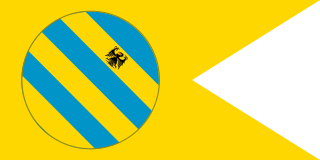
The Duchy of Urbino was an independent duchy in early modern central Italy, corresponding to the northern half of the modern region of Marche. It was directly annexed by the Papal States in 1631.
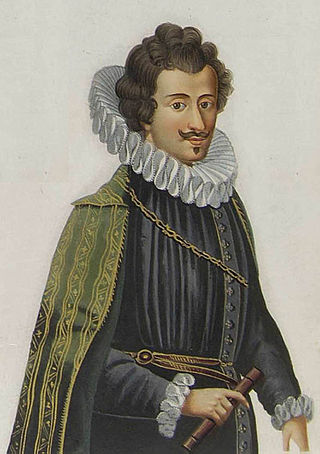
Alfonso III d'Este was Duke of Modena and Reggio from 1628 to 1629. He was the husband of Princess Isabella of Savoy, daughter of Charles Emmanuel I, Duke of Savoy and his wife Infanta Catherine Michelle of Spain.
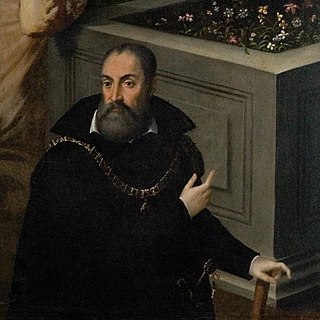
Ferrante I Gonzaga was an Italian condottiero, a member of the House of Gonzaga and the founder of the branch of the Gonzaga of Guastalla.
The County of Montechiarugolo was a small sovereign state of northern Italy which existed from 1456 to 1612. It included the other fief of Casei.
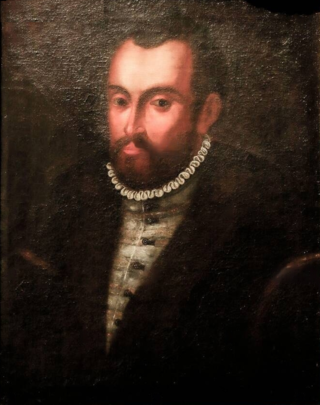
Cesare I Gonzaga was count of Guastalla from 1557 until his death. He was a member of the House of Gonzaga, the first-born son of the imperial condottiero Ferrante Gonzaga and Isabella di Capua. From the latter, he inherited also the title of Count of Amalfi. He was also Duke of Ariano and Prince of Molfetta. On 21 May 1558 he was appointed commander-in-chief of the troops in Lombardy by Philip II. On 12 March 1560 he married Camilla Borromeo (1536-1583), sister of Charles Borromeo and niece of Giovanni Angelo de' Medici, who had recently been elected Pope with the name of Pius IV.

Ferrante II Gonzaga was count and, from 1621, duke of Guastalla.
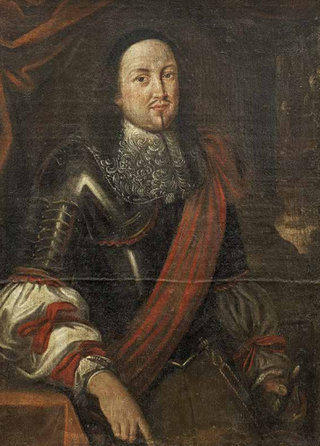
Ferrante III Gonzaga, was a Duke of Guastalla.
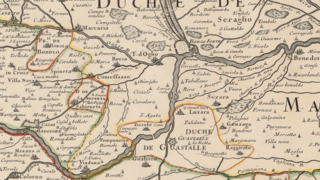
The Duchy of Guastalla was an Italian state which existed between 1621 and 1748. It was bordered by the Duchy of Modena and Reggio and the Po River to the north, on the opposite bank of the Duchy of Mantua. Its place at the center of Italy made it important in several campaigns during the Early Modern Era.
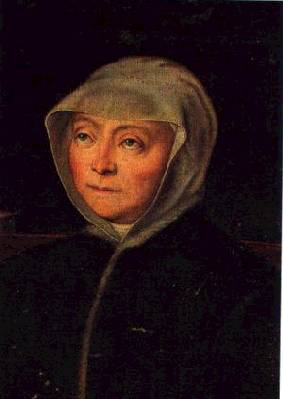
Ludovica Torelli was ruling Countess of Guastalla in 1522–1539. A philanthropist, she was instrumental in the founding of two religious institutes for woman: the Angelic Sisters of Saint Paul and the "Collegio della Guastalla"/"Daughters of Mary".

Isabella Clara of Austria was a Duchess consort of Mantua, Montferrat, Nevers, Mayenne and Rethel by marriage to Charles II, Duke of Mantua and Montferrat.
Andrea Gonzaga, Count of San Paolo di Civitate, was a member of the Italian House of Gonzaga, belonging to the cadet branch which ruled the Duchy of Guastalla.

Pomponio Torelli was Count of Montechiarugolo and a writer of prose, poetry and plays. He is principally remembered for his five tragedies.
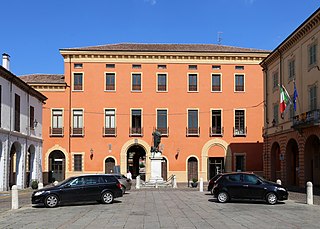
The Ducal Palace of Guastalla is an urban Renaissance-style palace in the town of Guastalla, a municipality in the Province of Reggio Emilia, Emilia-Romagna, Italy.
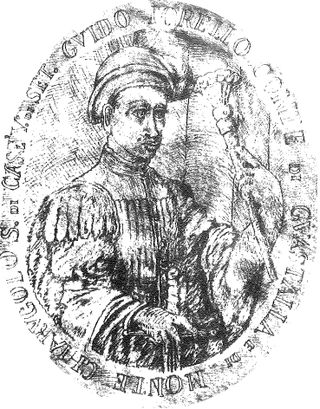
Guido Torelli was a condottiero. Through his military campaigns and diplomatic skills, he achieved the title of the first Count of Guastalla and Montechiarugolo.

Camillo Castiglione or Castiglioni was an Italian nobleman and condottiero.


















